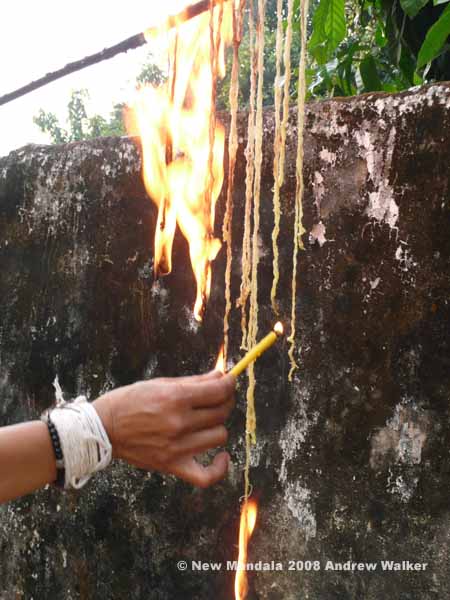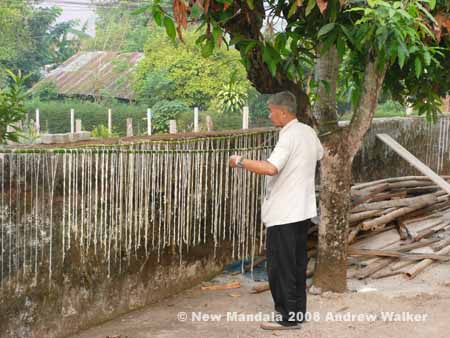
One of common themes in new year rituals in northern Thailand is the expulsion of the misfortune and bad luck that has accumulated over the previous year. One of the ways this is done in Baan Tiam, in Chiang Mai province, is by burning khi saay (р╕Вр╕╡р╣Йр╕кр╕▓р╕в) – cotton threads soaked in fragrant olive oil. Cotton thread is commonly used on ritual occasions: to tie wrists, to demarcate sacred places and to provide a physical link with sources of sacred power. In this particular case the oil-soaked threads represent the bad luck that the household has accrued over the past year.

On the morning of the first day of the year (paak pi – 16 April) the threads are taken to the temple and hung on long bamboo poles. One thread is brought for each member of the household, plus one for the chickens, dogs, cows and any other livestock. The rice barn and the motorbike may also be represented.

After a blessing in the temple the women of the village rush to burn the strings. Once they are burnt the bad luck is gone, and all that remains is the good that will unfold in the year to come.
I am not sure on the best way to translate khi saay. What about “unlucky strings”? Or “leftover strings”? Any suggestions?
 Facebook
Facebook  Twitter
Twitter  Soundcloud
Soundcloud  Youtube
Youtube  Rss
Rss